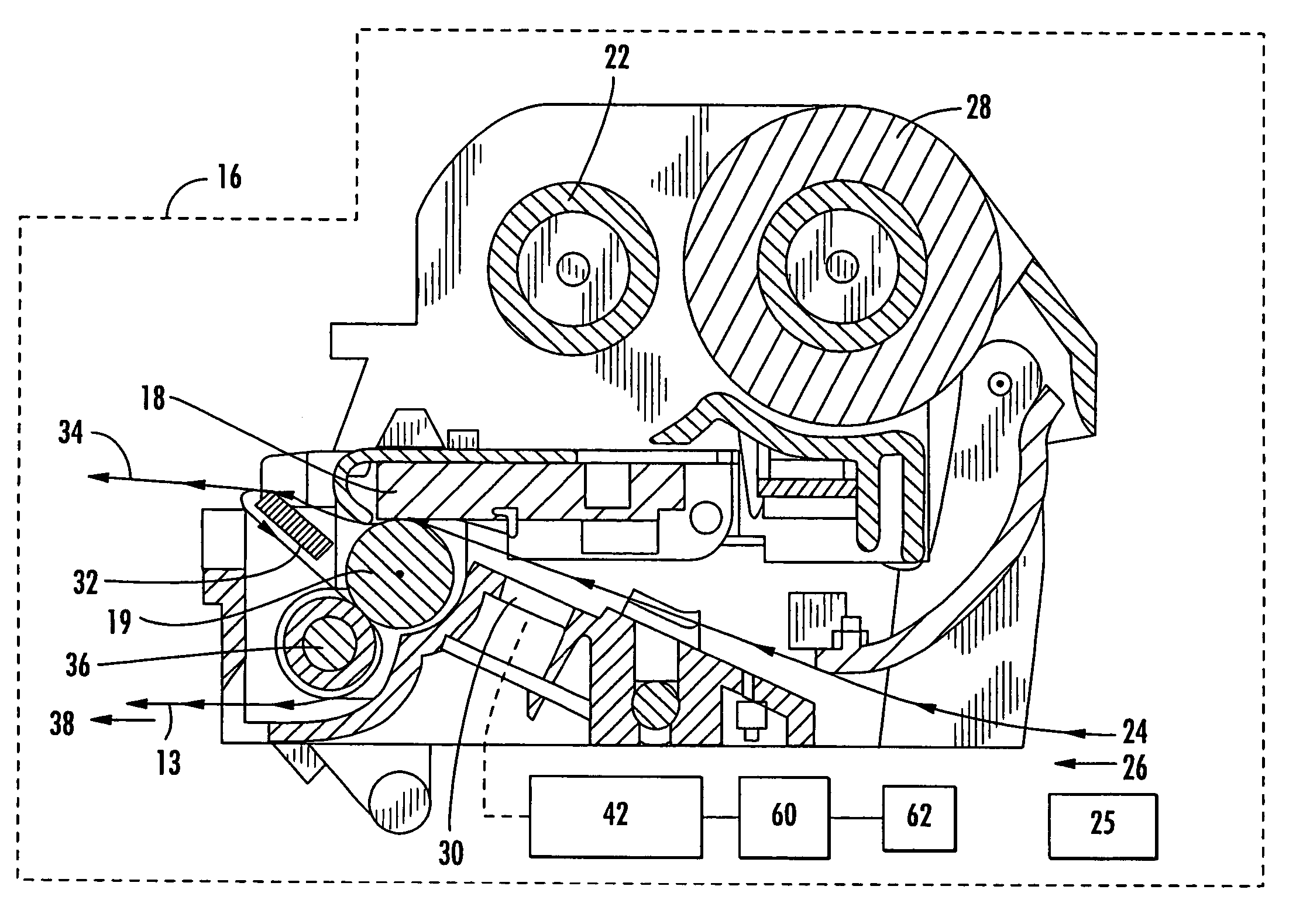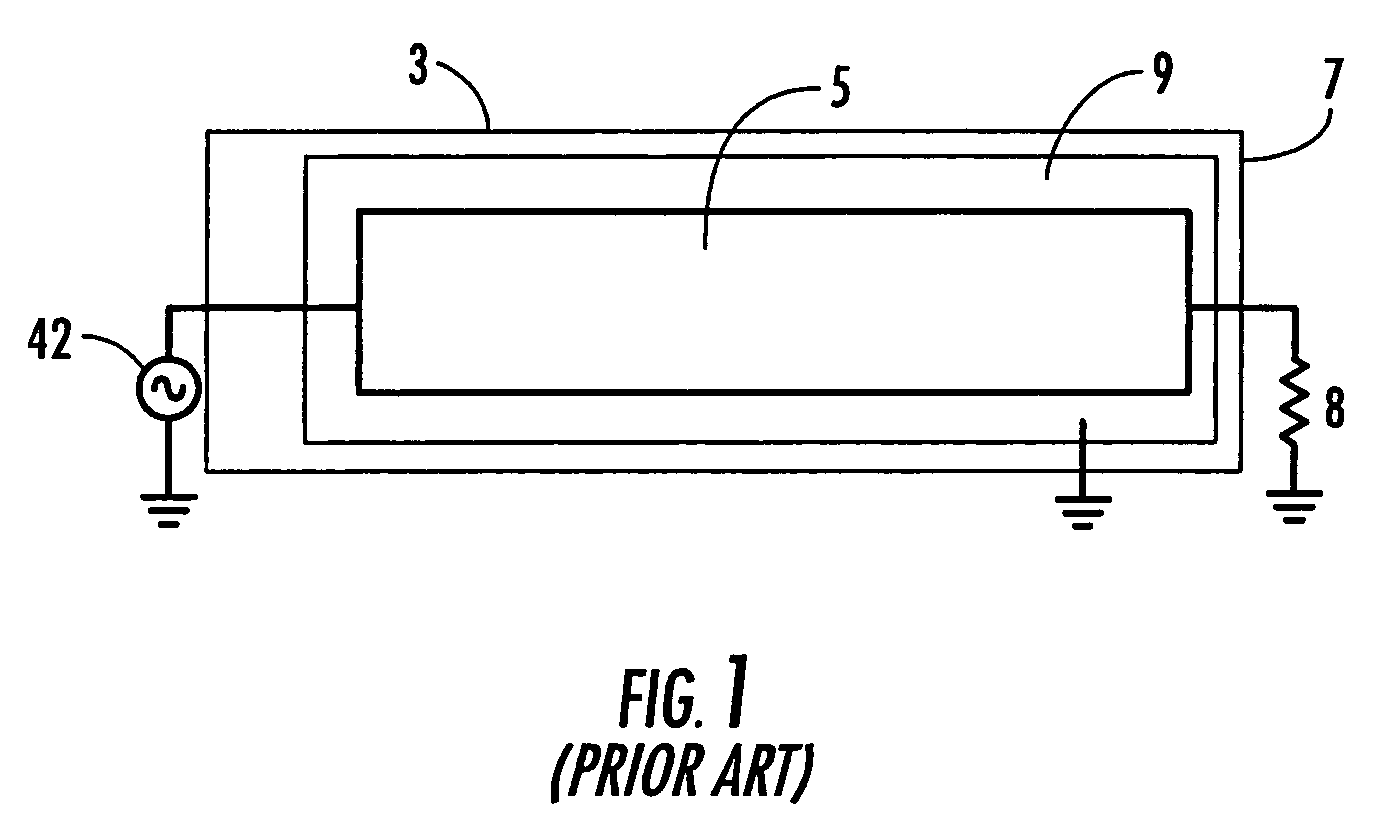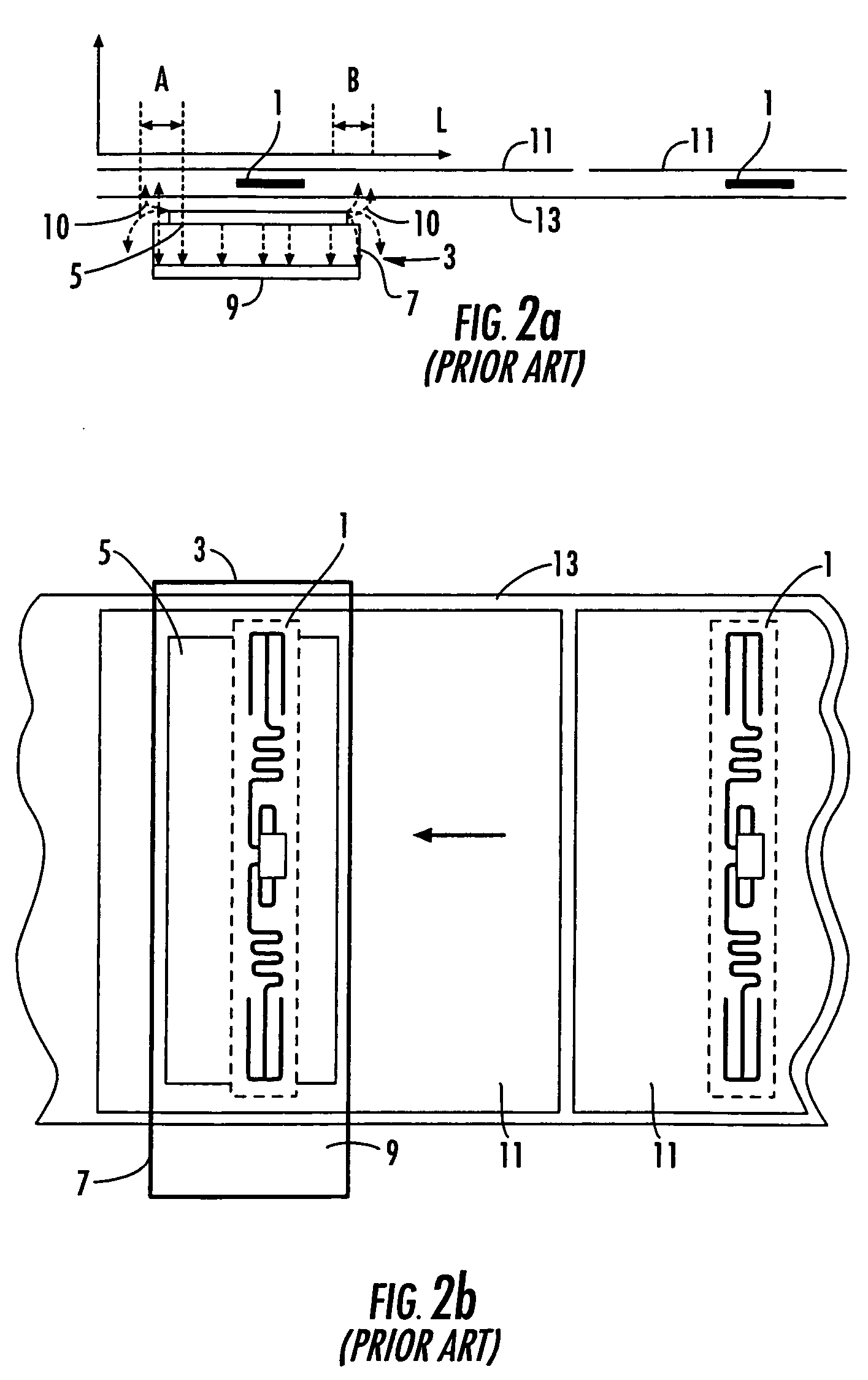System and method for detecting transponders used with printer media
a transponder and printer technology, applied in the field of printer media dispensing, can solve the problems of “reading” and or “writing errors, increased system complexity, and delay in response, and the effect of anti-collision managemen
- Summary
- Abstract
- Description
- Claims
- Application Information
AI Technical Summary
Benefits of technology
Problems solved by technology
Method used
Image
Examples
Embodiment Construction
[0035]The present invention addresses the above needs and achieves other advantages by providing a calibration apparatus for determining a location of a transponder supported by a printer media. The calibration apparatus uses a transceiver to attempt to read, write or otherwise communicate with the transponder. Controller logic of the calibration apparatus uses successful and unsuccessful attempts to communicate to determine the location of the transponder. For example, the controller may be configured to move the media in increments, each of the increments being associated with a successful or unsuccessful attempt to communicate with the transponder. The successful attempts, and their relative media positions, are correlated with the position of the transponder. As another example, the controller may be configured to use different power levels for the transceiver and one or more antenna / couplers to determine which power levels are required to successfully communicate with the trans...
PUM
 Login to View More
Login to View More Abstract
Description
Claims
Application Information
 Login to View More
Login to View More - R&D
- Intellectual Property
- Life Sciences
- Materials
- Tech Scout
- Unparalleled Data Quality
- Higher Quality Content
- 60% Fewer Hallucinations
Browse by: Latest US Patents, China's latest patents, Technical Efficacy Thesaurus, Application Domain, Technology Topic, Popular Technical Reports.
© 2025 PatSnap. All rights reserved.Legal|Privacy policy|Modern Slavery Act Transparency Statement|Sitemap|About US| Contact US: help@patsnap.com



